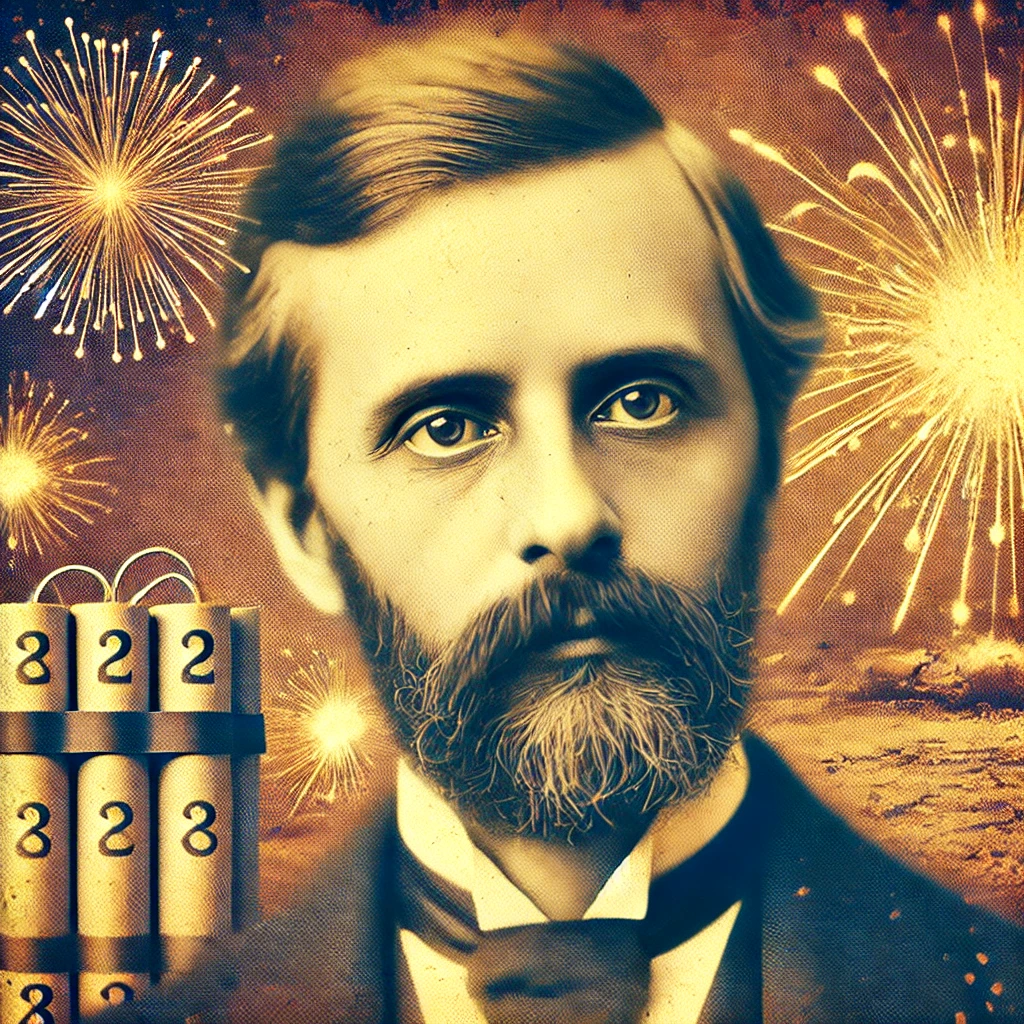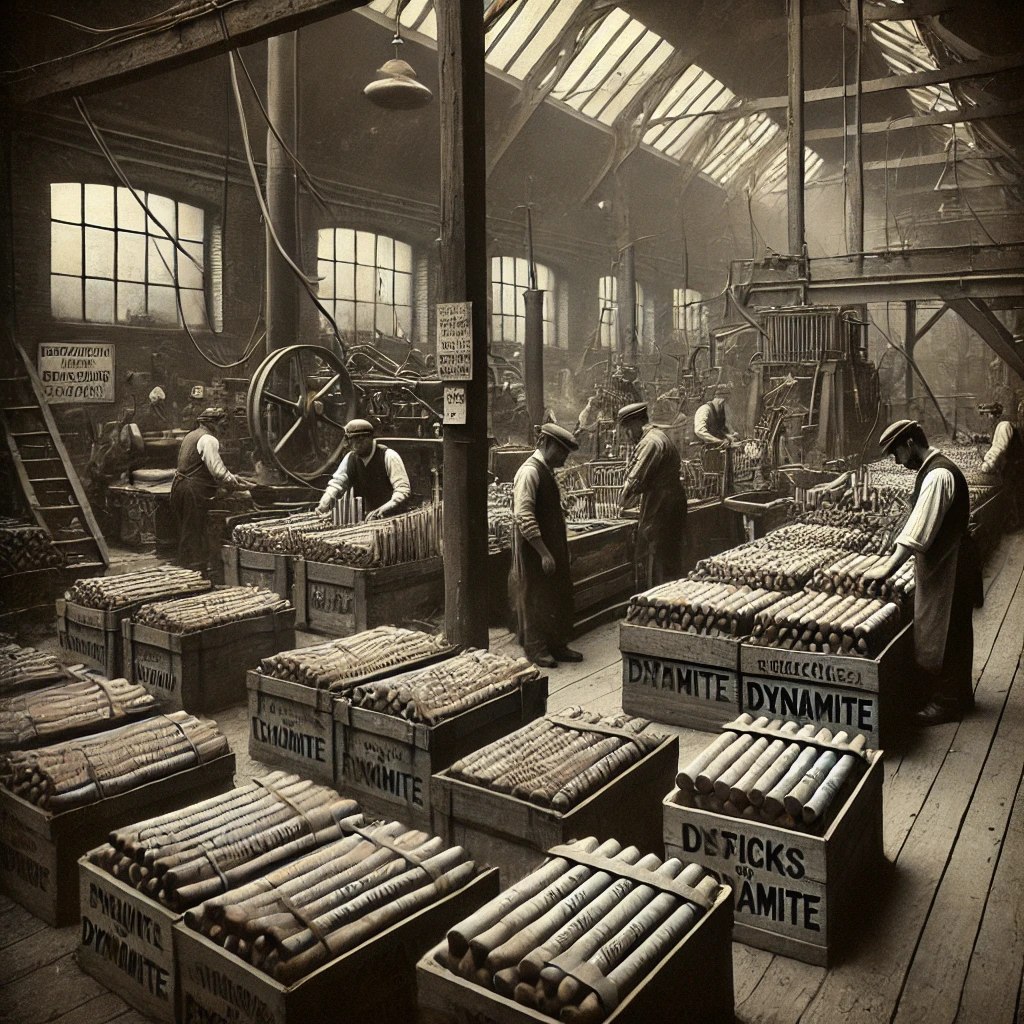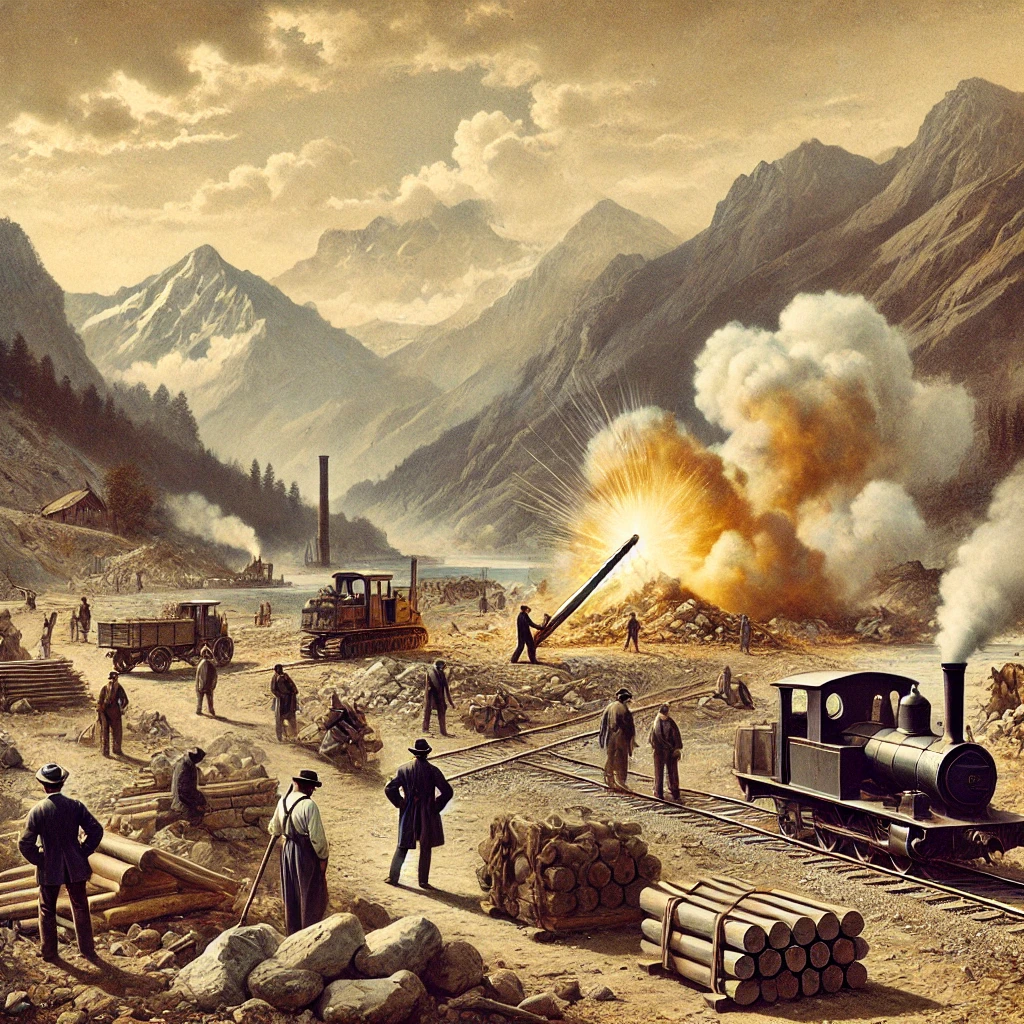On November 25, 1867, Alfred Nobel, the renowned inventor and philanthropist, was granted a patent for dynamite, an invention that would dramatically alter the landscape of industry and warfare. Nobel, who later established the prestigious Nobel Prizes, envisioned dynamite as a tool for progress, enabling safer and more efficient construction projects. However, its dual-use potential for destruction also shaped his legacy in profound ways.

Revolutionizing Industry and Engineering
Nobel’s invention of dynamite was driven by the need to improve the dangerous process of handling nitroglycerin, an unstable and volatile substance used in blasting. By stabilizing nitroglycerin with a porous material called diatomaceous earth, Nobel created a safer, more controllable explosive. This innovation proved transformative for construction and mining industries, allowing engineers to build railways, canals, and tunnels with unprecedented speed and safety. Dynamite enabled humanity to conquer natural obstacles, paving the way for modern infrastructure and economic growth.
With its controlled power, dynamite became an essential tool for shaping landscapes and extracting valuable resources from the earth. Projects such as the Panama Canal and countless mountain tunnels owe their success, in part, to Nobel’s invention. It represented a leap forward in human capability, turning once-impossible engineering feats into reality.

The Dark Side of Progress
While Nobel intended dynamite to be a force for progress, it soon became clear that its power could also be wielded for destruction. The invention was quickly adapted for military use, providing an explosive edge in conflicts around the world. This unintended consequence deeply troubled Nobel, as he witnessed his creation being used not only for building but also for warfare.
The turning point for Nobel came in 1888, when a premature obituary referred to him as the “merchant of death.” Believing his legacy would be defined by destruction, Nobel sought to change the narrative. He decided to use his fortune to create the Nobel Prizes, which would reward those who contributed to peace, science, and the betterment of humanity. This act of redemption reshaped his legacy and ensured that his name would be remembered for fostering progress rather than devastation.
A Legacy That Explodes Beyond Its Time

The patenting of dynamite in 1867 set off a chain of events that reverberate to this day. Its industrial applications revolutionized the modern world, while its misuse highlighted the ethical dilemmas of technological innovation. Nobel’s response to these dilemmas through the establishment of the Nobel Prizes remains a powerful reminder of the responsibility that comes with invention.
Today, dynamite continues to serve as a tool in construction and mining, though more advanced and safer explosives have largely taken its place. The Nobel Prizes, meanwhile, stand as a beacon of hope and progress, celebrating achievements in peace, science, literature, and more. Nobel’s decision to invest in humanity’s brighter future has ensured that his legacy is not one of destruction, but of profound and lasting impact.
The story of dynamite, its inventor, and its repercussions serves as a cautionary tale and an inspiration. It underscores the dual-edged nature of innovation and the importance of aligning technological advancements with ethical stewardship. As we reflect on this day in history, we remember the explosive invention that not only shaped the physical world but also sparked a moral awakening in its creator.
